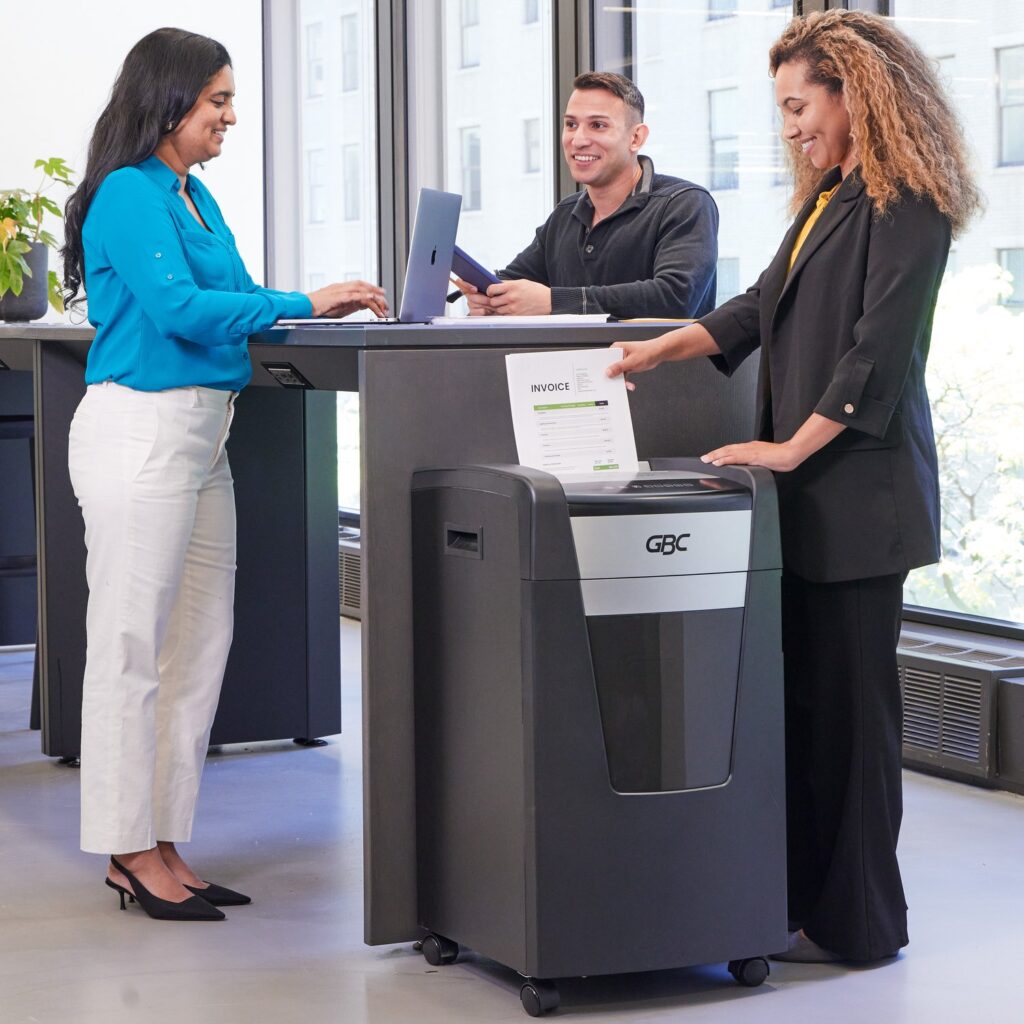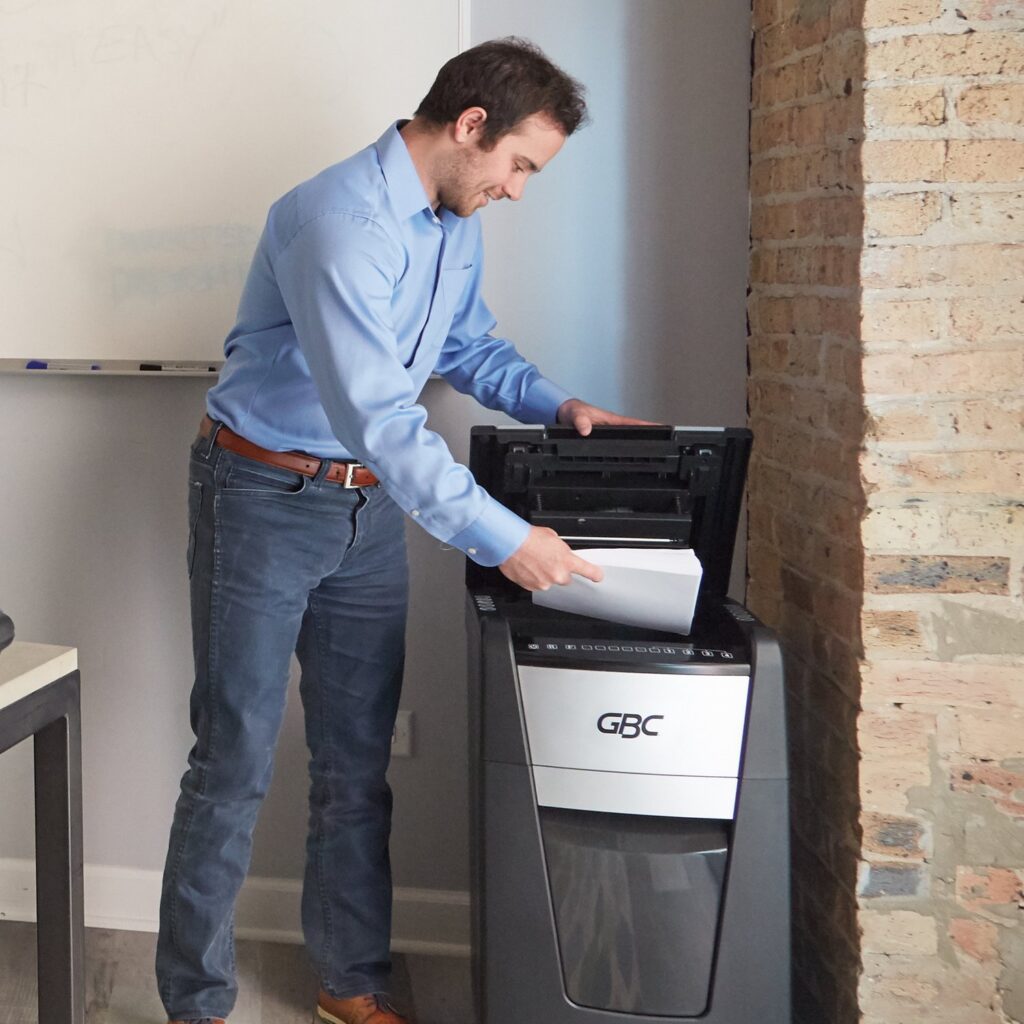The need for identity security is at an all-time high. News headlines constantly include stories about data breaches, stolen credit cards and identity theft scams. You may have even been a victim yourself. While we can’t secure all our information out in this world, there’s a crucial way to protect ourselves that’s 100% under our control: using a trusted GBC shredder to destroy documents that include sensitive and personal information. And during tax season, that’s especially important.
What exactly is a sensitive document?

A sensitive document is anything that includes personally identifiable information about you or your business that can be used by someone who shouldn’t. They contain unique identifiers like:
- Full names
- Birthdates
- Signatures
- Social security numbers
- Driver’s licenses
- Passports
- Medical records and invoices
- Bank accounts
- Credit card numbers
- Tax documents
- Human resources records
- Business and trade secrets
- Proprietary supplier information
- Customer information
And that’s just a partial list.
When should you shred sensitive documents?
That varies. Monthly credit card and utility bills can be shredded once you pay them. Certain documents, like medical and banking information, can be shredded after a year. Per the IRS, keep employment tax records for at least four years after filing the fourth quarter for that year, then shred them. Other documents, like tax info, should be kept for more than seven years before they hit the shredder. The IRS and Federal Trade Commission sites (irs.gov and consumer.ftc.gov) are always your best resources for shredding guidelines.
What security level do you need?

How you shred your sensitive documents is critical. So is the shredder, because all shredders are not created equal. GBC shredders have a reputation for reliability and are trusted time and time again for personal, office and commercial use. They’re identified by a standardized set of “security levels” — P1 to P7 — which determine how thoroughly a document is shredded. The higher the security level, the smaller and more complex the cut. A P-2 shredder will provide simple strip cuts, around 40 total for an 8 1/2″ x 11″ document, while a P-7 shredder offers the highest security with 12,500 total pieces or more for that same size document. That’s a huge difference! To know what security level you need, consider what types of documents you’re shredding. Here’s a basic guide:
Non-Sensitive
- Level P-1: strip-cut: ≤ .5″ W
- Level P-2: strip-cut: ≤ .25″ W
- Level P-3: cross-cut: Width: 0.08″ W x 0.5″ L
Sensitive or Confidential Information
- Level P-4: micro-cut: 0.24″W x .25″ L
- Level P-5: micro-cut: 0.08″ W x 0.05″ L
Top Secret Information
- Level P-6: micro-cut: 0.04″ W x 0.02″ L
- Level P-7: micro-cut: 0.04″ W x 0.01″ L
A GBC shredder with level P-4 security or better is a reliable choice. Don’t underestimate. You don’t want a data thief reconstructing your documents and stealing sensitive information. (Yes, that actually happens.)
So, take the time to properly shred sensitive documents with a GBC shredder. You’ll protect yourself from becoming a potential victim of identity theft and business fraud and invest in your peace of mind.
To learn more about GBC’s personal, office and commercial-grade shredders and find the right one for you, contact your SPR Account Manager.






